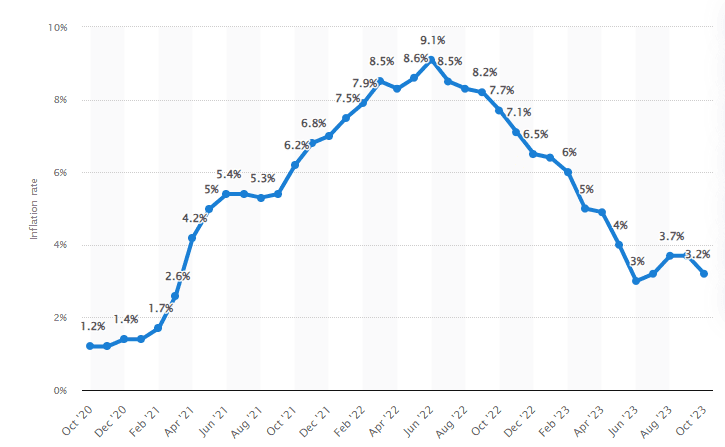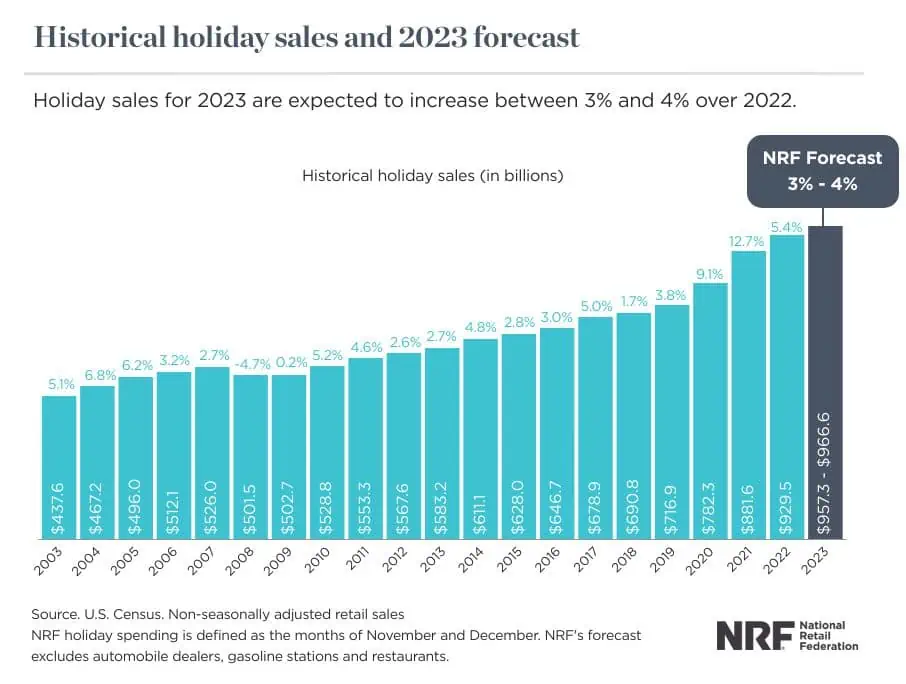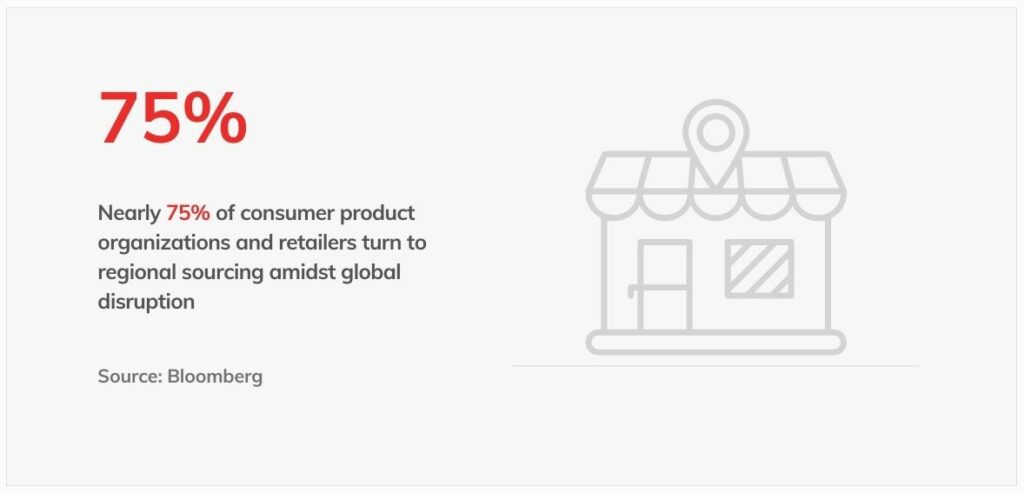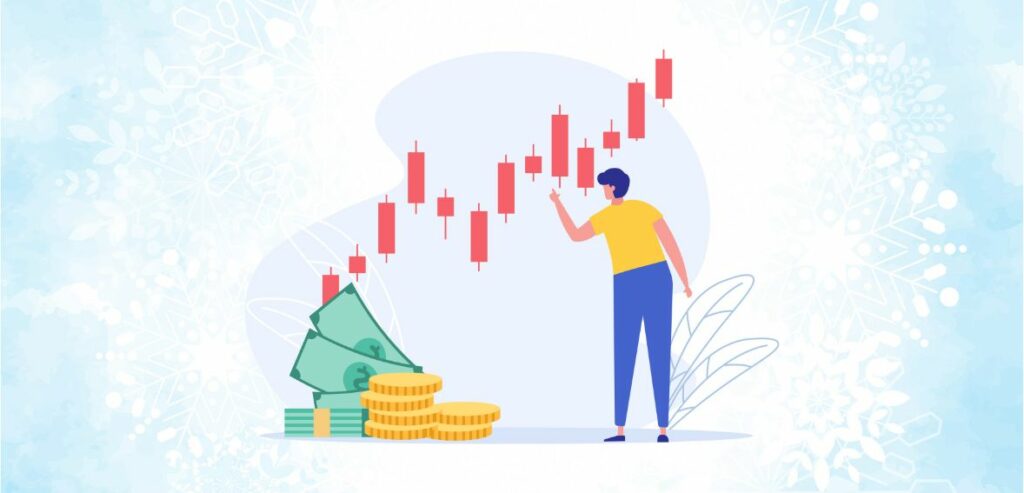The holiday shopping season for 2023 has officially arrived. Brands and retailers are busy and actively involved in their marketing strategies. They are making sure to have inventory and aligning their resources for a great quarter ahead and a joyous holiday season. Plans are in place for wholesale, dropship, marketplaces, and social initiatives, creating a great atmosphere for the festivities.
Taking insights from the figures for 2022, retailers and brands have plenty of reasons to feel positive about the approaching holiday season. Projections indicate that retail sales will surpass $1.6 trillion by 2027, which is more than phenomenal.
However, the current economic landscape brings some uncertainty to this year’s quarter due to factors like macroeconomics, inflation rates, job market conditions and high-interest rates. There is anticipation among industry observers as they await to see how consumers will navigate these challenges while approaching their holiday shopping. Let us understand the holiday shopping trends in 2023 and how inflation and supply chain problems will impact these 2023 holiday shopping trends.

Source: Statista – Monthly inflation rate in the US
The Impact Of Inflation On Item Prices This Year
The holiday shopping season is starting this year and many consumers are taking advantage of discounted prices to get a head start on their gift purchases. As we approach the holidays, numerous retailers have already reduced prices on a range of products, including electronics and clothing.
The potential impact of rising costs on holiday shopping is something to consider this year on the holiday shopping trends. For example, TV prices have dropped by 9.4% compared to the year. However, overall there has been an inflation rate of around 3.2% higher than the year before for goods. These numbers fall within a range so analysts are expressing skepticism about any major effects this year.
The 2023 holiday shopping season is expected to resemble pandemic years in terms of consumer behavior, with more people choosing to buy gifts in physical stores rather than online. Retailers are also better prepared to manage their inventory levels. And, of course, there are pressures that contribute to rising prices for goods.
Experts anticipate a subdued holiday season, with things returning to a more usual state after a surge in spending during the height of the pandemic. Over the decade (2010 to 2019), holiday spending experienced a yearly growth rate of 3.6%. In 2020 spending exceeded that of 2019 by 9.1%. This was further surpassed by another 12.7% in 2021. However, reports suggest that this year we can expect spending with an overall increase projected at around 3 4%.

Source: NRF
Rising inflation in sectors, such as grocery prices, may impact people’s incomes. It may potentially lead to cutbacks in holiday shopping.
Budget Adjustment By Consumers
Consumers might be adjusting their budgets to accommodate prices, which could result in controlled spending. According to McKinsey reports 79% of consumers are making more budgetary choices this year. In response to holiday shopping trends, companies are placing emphasis on offering holiday promotions. Walmart, for example, has lowered prices on gift items. They also assured customers that their Thanksgiving meals would be more affordable compared to the year prior. Target plans to provide over two-thirds of its toys at prices below $25.

Retailers Anticipate Supply Chain Difficulties by 2023
Consumer goods and retail companies (CPR) are preparing themselves for head-on difficulties in their supply chains during this holiday season. According to a recent report, 42% of these companies anticipate facing stockouts or product shortages and 75%1 are finding local source to fight the anticipated stockout1.
Moreover, there is an expectation of delays in delivering products to customers due to import delays by 38%2 of companies. Alongside this, 35% foresee labor shortages as well. Various challenges faced by supply chains include factors like inflation, geopolitical tensions, dependency on countries for components, fluctuating freight rates, and port congestion will certainly impact the holiday shopping trends this year.
Geopolitical Issues
Geopolitical issues are also impacting the holiday shopping trends this year. Especially costs and efficiency of supply chains for 77% of consumer goods and retail organizations are the worst impacted. As a result, many companies are giving importance to nearshoring and domestic sourcing options as they strive to balance cost-effectiveness with resilience. These changes, coupled with increases in shipping rates, have forced manufacturers to make tough decisions about what products they can transport. Consequently, consumers may experience a reduced variety of choices on store shelves.
So, what does all this mean for consumers? It is advisable not to leave your holiday shopping until the minute. In fact, it would be wise to complete the majority of your shopping before December if possible.
Retailers Ready To Face The Challenges And To Overcome It!
In the face of escalating inflation, surging costs, and uncertainties in the labor market, consumers are strategically optimizing their purchasing power. A staggering 89% of global consumers actively seek better value, and they are finding their preferred options in marketplaces and dropship businesses, which experienced an impressive 38% growth in 2022.
Furthermore, retailers and brands on a global scale are actively expanding their presence on marketplaces, with over 60% planning to diversify across channels in the coming year to address the challenges they face.

For brands, it translates to increased exposure to potential new customers, while retailers are seizing the opportunity to expand their product offerings, reach new customer segments, and boost the Average Order Value (AOV). Marketplaces have emerged as leaders in this new era of commerce, providing value-conscious shoppers with the diverse choices they desire.
Top Holiday Shopping Trends And Insights To Look Out For In 2023
1. The Prominence of AI Will Shine
The prominence of Generative AI and other models is a major highlight in this year’s discussions, and these tools are becoming increasingly mainstream. Research indicates that 17%3 of consumers have utilized GPT for inspiration and product research, with an additional 10% expressing the likelihood of using it to curate their holiday shopping lists.
Predictive AI has already played a crucial role in enhancing the shopping experience online. Product recommendations generated by AI have been a staple for digital marketers and ecommerce merchants, providing consumers with suggestions on product detail pages, in shopping carts, and beyond.
This holiday season, brands and retailers are expected to embrace this technology, leveraging customer data to prepare more personalized and better shopping experiences that add value and loyalty. The notable impacts will be observed in:
- Marketing: Automation of marketing campaigns and generating content for landing pages, emails, social media, text messages, and other applications.
- Commerce: Introduction of conversational site search for a more natural and human approach to discovering the perfect gift across various digital touchpoints.
- Service: Development of more human-like and nuanced chatbot responses capable of deeply anticipating, addressing, and understanding user queries.
2. Strong Pull to Home Products
Consumers are currently placing a strong emphasis on home products and services. The extended period of time spent at home over the last three years has significantly influenced the types of gifts people are planning to purchase. A notable 64%4 of shoppers intend to buy home products, such as coffee makers, vacuums, as well as electric toothbrushes, as gifts for the upcoming holiday season.
3. BNPL to be the Hero of Festive Season?
‘Buy Now, Pay Later‘ shopping apps are becoming increasingly popular, offering consumers additional flexibility in their purchasing choices. Services like Klarna, Affirm, Apple Pay Later, and Afterpay, alongside standard payment options, are now featured on various online merchant sites, and their popularity is expected to rise.
Here’s how they typically work: When customers opt for these platforms during checkout, their total order amount is divided into easy installments (which are usually 4 or 6). The first installment is levied during purchase, while the balance is automatically charged every other week after. Many of these platforms have simple terms, don’t impose interest charges, and skip credit checks – features that appeal to consumers. The ability to pay off the “debt” in few easy EMIs adds to the appeal.
Retailers also stand to benefit from these payment plans. They not only encourage customers to make more purchases but also facilitate the acquisition of high-priced items that might have been otherwise out of reach. Additionally, retailers experience fewer instances of shopping cart desertion and reduced returns for items bought through ‘Pay Later’ services.
However, consumers should be mindful of the potential drawbacks. While these services offer convenience, they may lead to higher spending. Falling behind on payments is a risk, and as users become accustomed to these installments, the introduction of interest fees in the future is a possibility. It’s essential for shoppers to weigh the benefits and risks before embracing ‘Buy Now, Pay Later’ options.
4. BOPIS to Contribute Highly this Festive Season
This in-store pickup option has become a significant driver of additional purchases in the physical store. This option gained popularity in 2020 and has since become a crucial aspect of the shopping experience. Studies show that consumers’ decisions about which retailers to shop at are greatly influenced by BOPIS, with 39% of consumers actively looking for stores that provide this service.
The effect on sales is also noteworthy, as 41% of consumers say they are more likely to buy something after looking online for products that are available in physical stores than they were a year ago. The trend toward omnichannel purchasing emphasizes how crucial comfort and access are to retaining customers. One out of every five online orders during the prior festive shopping season was fulfilled through BOPIS; after shipping deadline dates, this percentage increased to more than one in three.
However, implementing BOPIS successfully can be complex. Stores need to adopt new training programs, processes, metrics, and incentives to scale it profitably. The use of tools that enable seamless execution becomes crucial in maintaining a balance between streamlined operations, high customer satisfaction, and positive associate morale.
5. Both Online and In-Store Business Will See Growth
Offering customers the flexibility to choose between online and in-person shopping, especially if you have a physical store, is a smart strategy. This approach caters to their preferences in how and when they want to shop. The key, however, lies in ensuring a consistent experience, whether customers are shopping online or visiting your brick-and-mortar location.
An integrated shopping experience ensures that inventory information is transparent and promotions align seamlessly both online and offline. This means that when a customer wants to physically examine a product before making a purchase or assess the color options in-store, they can do so with confidence, knowing the item’s availability.
For those concerned about package theft or residing in multifamily housing, ordering online and opting for in-store pickup can offer added convenience. It’s crucial to provide a cohesive experience, regardless of where the consumer chooses to shop and their preferences for a particular purchase.
6. Addressing the Impact of Inflation on Consumer Spending
The economic challenges of recent years have placed a strain on consumers’ finances, with many households acknowledging the influence of inflation on their holiday budgets. Consequently, individuals are actively seeking the best opportunities for savings to mitigate the effects of inflation on their seasonal expenses. Some may opt to trim down their shopping lists, aiming to make more prudent purchases.
In response to this consumer sentiment, retailers are adapting their strategies by adjusting inventory, focusing on more budget-friendly options, and strategically pricing products to align with customers’ financial constraints.
However, it’s crucial for businesses to approach discount planning with precision. Careful consideration is needed to avoid potential pitfalls, such as losing profitability on sales or diminishing profit margins to an extent that could compromise the overall success of the holiday season. In essence, countering rising inflation’s impact requires a thoughtful approach to discounts and incentives, ensuring a balance that supports both consumer affordability and business sustainability.
7. Tailoring Special Deals for a Personal Touch
Just as customers receive personalized offers from various service providers, it’s only natural for them to anticipate personalized deals from your business during the holiday season. Enhancing the customer experience involves considering how to make these deals uniquely special based on individual preferences and interactions.
One approach is to craft deals that align with a customer’s past purchases, ensuring that advertisements highlight products related to their buying history. Alternatively, you can extend offers connected to items they have recently viewed or expressed interest in, creating a more tailored and relevant shopping experience.
The key to establishing a meaningful connection lies in the customization of offers. The more personalized the deal, the stronger the impression that your business is actively building a relationship with its customers. Leveraging data is crucial in achieving this level of customization, prompting potential investments in more advanced systems and tools to elevate your business’s intelligence and responsiveness.
8. Captivating Shoppers with Video Marketing
Harnessing the power of video ads can significantly influence a customer’s purchasing decision, adding a dynamic element to your holiday marketing strategy. Whether opting for a live stream or pre-recorded video as part of your social media content, the impact of effectively showcasing a product’s features and benefits during the holiday season can yield impressive results.
Video content proves particularly effective in capturing the attention of younger shoppers, with Gen Z highlighting its significant influence on their product choices. Surpassing other impactful factors, such as recommendations from friends or family or witnessing trusted individuals using the product, videos play a pivotal role in shaping purchasing decisions for this demographic.
To leverage this trend, consider creating suitable videos tailored for social media platforms or collaborating with influencers to generate engaging video content. Initiating contests that encourage users to share their own videos featuring your products can also result in valuable user-generated content, enhancing your brand’s visibility and engagement.
Conclusion
In 2023, as we move through the challenging terrain of holiday shopping trends, it is clear that there exists a fine balance between different economic variables, such as costs, consumers’ purchasing decisions, and industry changes. In order to curb up inflation, retailers have strategically adopted early discounts as well as value-based promotions in anticipation of its effect on prices. Consumers are being forced to rush to finish purchasing before supply chain threats take over and force them to wait longer than usual before buying for Christmas.
Despite the numerous uncertainties in the industry, technology, including AI, is becoming fundamental to many retailers to improve customers’ shopping experiences. While inflation will have an effect on consumer expenditure in companies, a smart approach to discounts and tailored discounts comes up as a critical step.
This complex mix of factors involves agile and flexible retailers who will probably surmount during the festive season.
Frequently Asked Questions
Q: How Do Holidays Impact the Supply Chain?
The holiday season can impact the supply chain due to various factors, including stringent stock control measures and challenges in handling shipping issues, especially during the final stages of delivery—the crucial last mile.
Q: What’s the Christmas Shopping Outlook for 2023?
Anticipated holiday shopping trends for 2023 indicate that consumers plan to spend a similar amount as in 2022 but on fewer gifts. The total planned expenditure is slightly higher than the 2022 levels by one percentage point, while the expected number of items to be purchased is four percentage points lower than the previous year.
Q: What Are the Holiday Sales Predictions?
While holiday shoppers are expected to increase spending, their focus on value and desire for deals might temper overall growth, bringing it back to pre-pandemic levels, according to the National Retail Federation. The major trade group forecasts a 3% to 4% year-over-year increase in sales for November and December.
Q: Why Could the Supply Chain Crisis Impact Your Holiday Shopping?
The ongoing supply chain crisis may disrupt last-minute holiday shopping plans, forcing buyers to resort to traditional methods this season. The combination of high demand, supply chain delays, material shortages, and challenges in hiring workers is reducing the availability of items both online and in physical stores.
References
1- Bloomberg
2- Capgemini
3- Salesforce
4- Gallup

